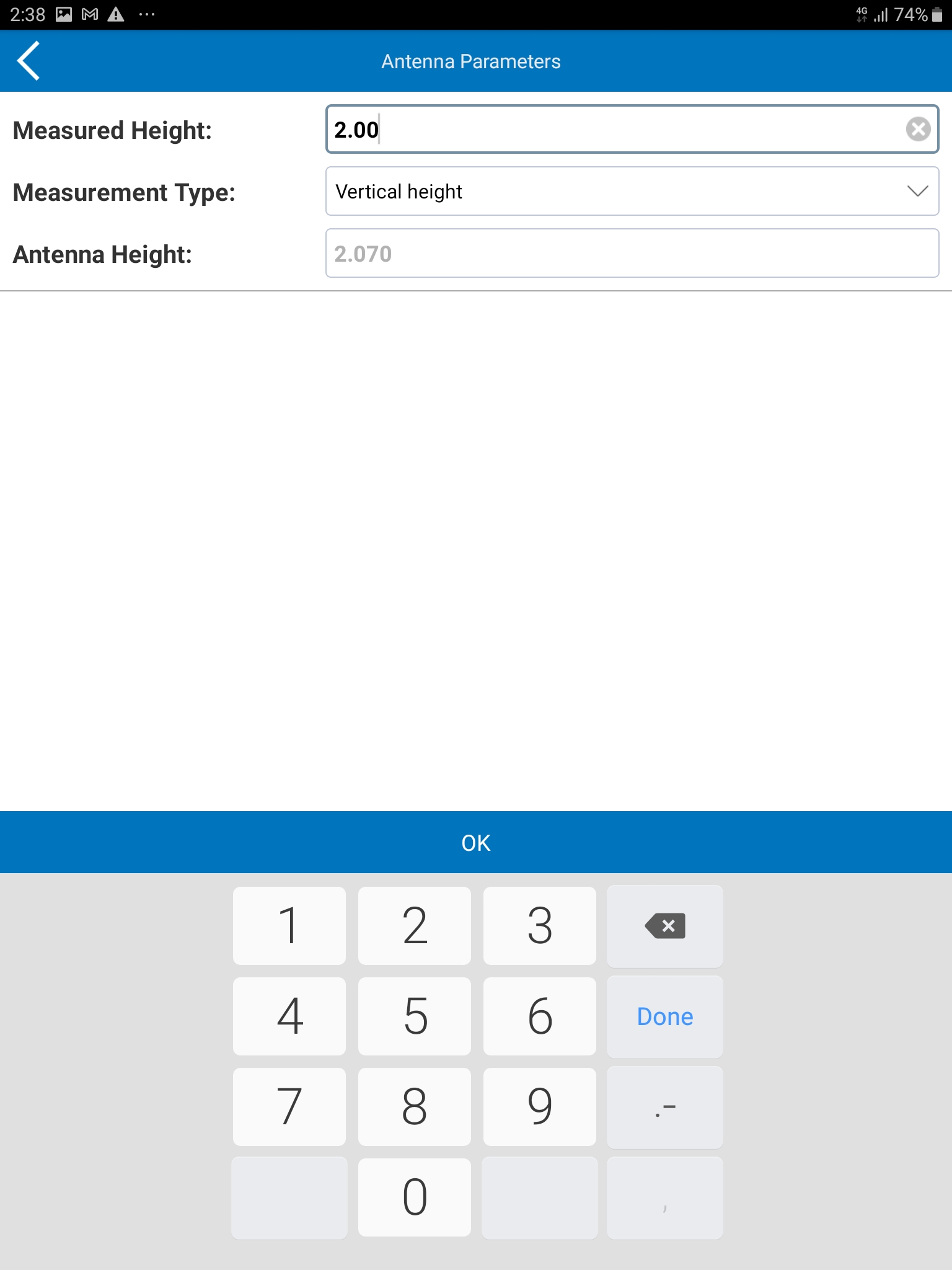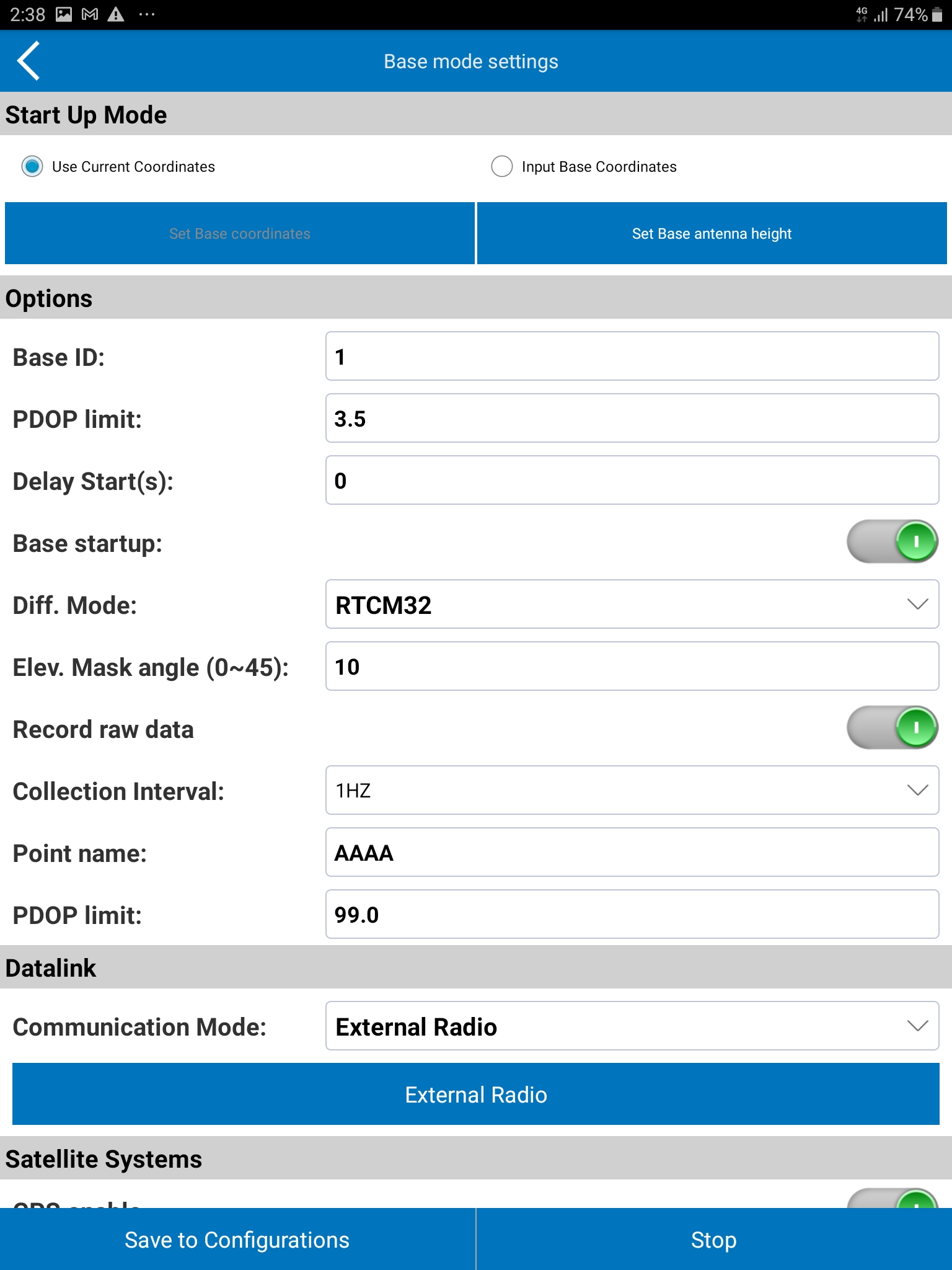Configure base station
Configuring an S900 receiver to function as a base station and send corrections via an external radiomodem
Configure base settings
Configure your base to use either current coordinates or inputted coordinates. Selecting current coordinates will instruct the base station to use an averaged position. If your base is setup over a known position, select Input Base Coordinates and enter the coordinates as either geographic coordinates (lattitude and logitude) or grid coordinates (northing and easting). If you choose to enter grid coordinates, make sure the inputted coordinates reference the same projection and geoid model as your Cube-A project's projection.

Input your base station height using the Set Base antenna height menu. Measure the height from ground to your receiver's antenna reference point (ARP) and input this value as a vertical height. If you are using a Stonex S-900 reciever, the bottom of the receiver is the ARP. All antenna height measurements should be input into Cube-A in units of meters.

Under Options in the Base mode settings menu, ensure that Diff. Mode is set to RTCM32. Communication Mode should be set to External Radio. External radio baud rate should be set to 38400. It is recommended that Record raw data be enabled, with a collection rate of 1 Hz and PDOP limit of 99 (keep all measurements despite high PDOP). PDOP limit for rover-base communication (at the top of the menu) should be a much lower value, ideally between 1 and 4.

Last updated